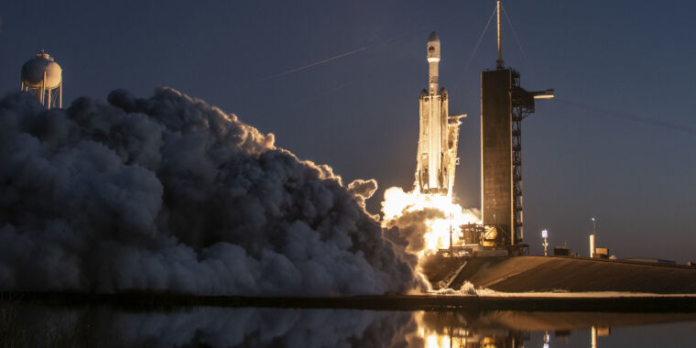The US military recently released a rather mundane-sounding document titled “National Security Space Launch Phase 3 DRAFT Request for Proposals #1.” That may be a mouthful of jargon, but it’s still a rather consequential document. Effectively, its release is the starting gun for the next round of launch contracts for US spy satellites, secure communications satellites, and more.
There is a pile of money at stake. Up for grabs are launch contracts worth billions of dollars—substantially more than $10 billion—as the military seeks to secure launch deals for the late 2020s and early 2030s. The document itself is pretty bland, but in a follow-up teleconference with reporters, two US colonels overseeing space acquisition, Douglas Pentecost and Chad Melone, provided a trove of information.
Wait! I know this sounds dreadfully boring, but it’s really not. Based on the document and this hour-long call, it’s possible to get a good sense of where the US military believes the country’s launch industry is headed. And that matters because in many cases, the contracts offered by the military can make or break launch companies. For example, after the last round of bidding for national security launches ended, Northrop Grumman ended its efforts to develop the Omega rocket.
What follows are some of the conclusions we can draw from this new information.
Finally serious about commercial launch
The US military has long been behind the curve in supporting the US commercial launch industry.
For example, NASA gave its first contract to SpaceX way back in 2006, and this funding supported the development of the Falcon 9 rocket, which is now the bedrock of the US launch industry. In 2012, after SpaceX had already successfully flown the Falcon 9 four times, the military nonetheless awarded a block-buy contract exclusively to United Launch Alliance. Commercial launch startup be damned, the Department of Defense stuck with its monopoly.
As the Falcon 9 continued to fly, with prices substantially undercutting United Launch Alliance, this decision came to look pretty silly. So a few years later, the program was modified to allow SpaceX to win a few of these military contracts.
Advertisement
However, the overall process remained limiting. During the most recent round of launch contract awards, known as Phase 2, the military awarded just two winners. And bidders had to meet a series of very rigid and challenging criteria that eliminated all but the biggest of launch companies. Ultimately, the military selected United Launch Alliance and SpaceX. Blue Origin and Northrop Grumman were told to try again later.
Phase 3 of the National Security Space Launch program appears to finally recognize the booming US commercial launch industry, and Space Systems Command has made a significant change to accommodate more companies. It has created two lanes for bidders. The first will be for lower-cost missions and will be open to a plethora of new entrants. The second lane will be for the most difficult missions—heavier and more valuable payloads going to more difficult-to-reach orbits. These will be higher-value missions and require rockets to be certified to a much higher standard.
What is Lane 1?
Pentecost said about 30 “Lane 1” missions will be awarded during a five-year period from fiscal year 2025 to 2029. These satellites will mostly fly into low-Earth orbit, and the missions are more “risk tolerant,” meaning that if the rocket blows up and the satellite is lost, it will not have a hugely adverse effect on the military’s operations.
The goal is to provide an opportunity for companies developing new medium-lift rockets to enter the competition. This includes Rocket Lab (with its Neutron rocket), Relativity Space (with its Terran R vehicle), and ABL Space (which has not named or announced a vehicle), Pentecost said. Companies with larger launch vehicles, like United Launch Alliance, SpaceX, and Blue Origin, are also eligible to compete in Lane 1. There likely will be many potential providers. Pentecost said 27 companies signed up for an “industry day” on February 28 to discuss this opportunity.
These companies with medium-lift launch vehicles will not have to undergo a rigorous, paperwork-intensive process and become “certified” to compete. However, they will need to have flown at least one mission to the orbit where a payload is going before being eligible to win a launch contract. “The one-launch requirement is to make sure that we’re not awarding contracts to paper rockets,” Melone said.
The opening of Lane 1 to much broader competition suggests that the US military is truly on board with embracing the commercial launch market. “Several factors have strongly influenced our strategy, most notably the ever-growing commercial launch market,” Pentecost said.
The gold rush for the next round of military launch contracts has started
RELATED ARTICLES



